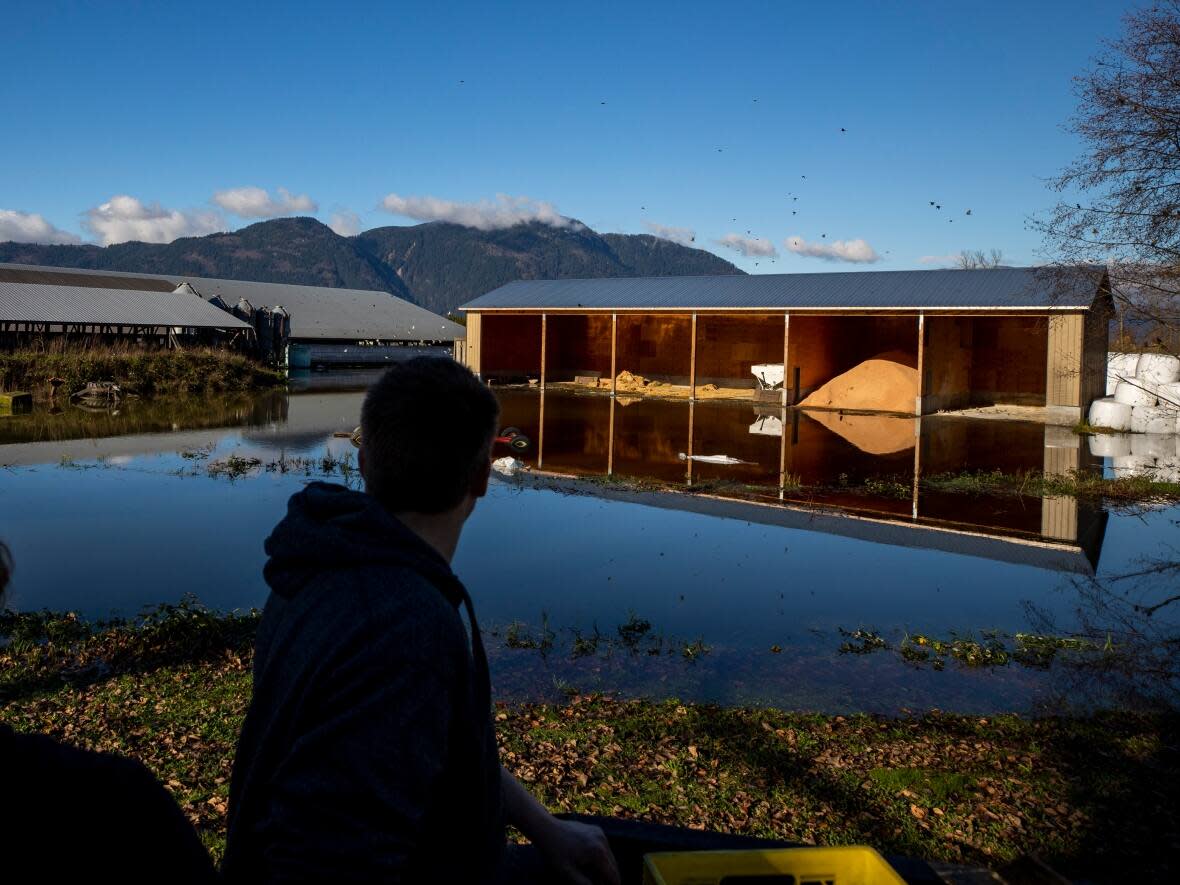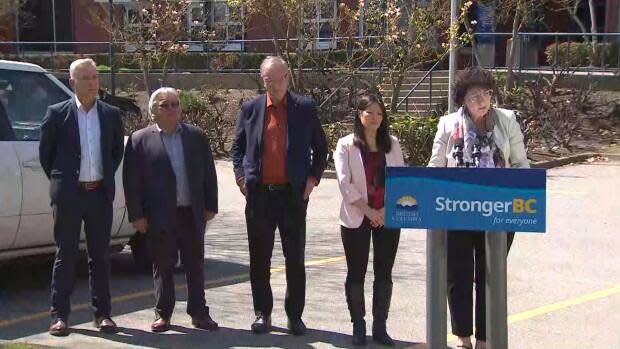Province to provide $8.5 million for Abbotsford flood recovery projects

The provincial government announced Friday $8.5 million in new funding to the City of Abbotsford for several flood recovery and mitigation projects.
In November 2021, catastrophic flooding devastated the Fraser Valley after the region received unprecedented rainfall over just a few days. The province has deemed the incident the most expensive natural disaster in B.C.'s history.
"We lived through those terrifying days of November 2021, and nobody wants to experience anything like that ever again," said Minister of Emergency Management and Climate Readiness Bowinn Ma at an Abbotsford news conference Friday.
The government also signed an agreement with local First Nations, the City of Abbotsford and the City of Chilliwack to improve the Sumas Prairie's resiliency to flooding.
The province is giving an additional $4 million to support the Sumas River Flood Mitigation Collaborative Framework, which brings together a technical team of experts to advise on best practices for flood-risk mitigation and guide the delivery of watershed recovery programs.
Ma said working with local First Nations has been key to recovery efforts.
"We learned things about our home here that were new to many of us but were not new to the First Nations who have lived here since time immemorial," said Ma.
Of the $8.5 million announced, $3.2 million is for flood-protection upgrades to the Barrowtown pump station.
Consisting of four pumps, the station prevents water from the Fraser River from flooding the Sumas Prairie, which used to be a lake before it was drained by European settlers in the 1920s.
The Barrowtown Pump Station, the only thing keeping excess water flow from the Fraser River from entering the former lakebed, came close to failing during the 2021 floods.
The remaining $5.38 million is for additional recovery projects, including a flood wall and protection measures for electrical systems.

'A fight with nature'
Chief Dalton Silver with the Sumas First Nation said the decision to be a part of the recovery efforts was not easy as the original decision to drain the lake was devastating at the time to Indigenous populations who used it as a source of food.
"Over thousands and thousands of years, our people strived to live with nature. Some of the things we're going to be involved with is actually a fight with nature," said Silver at Friday's news conference.
However, he said he and Indigenous leadership came to the conclusion that the province's recovery framework is in the interest of public safety.
"We saw the destruction caused to a lot of our friends, our relatives, our neighbours. And I think in the interest of that protection in the future, we're looking to work together and collaborate."
Spring flood risk
With the weather heating up, the province is also warning residents that mid-elevation areas may experience a higher flood risk this weekend in low-lying areas near rivers and streams.
An information bulletin from the Ministry of Emergency Management and Climate Readiness says people should steer clear of riverbanks and shorelines during periods of high flow.
These areas include the Chilcotin, areas around Prince George, Quesnel, Williams Lake, Cache Creek, and throughout the central Interior and smaller watersheds in the Okanagan and Boundary regions.
"The River Forecast Centre will monitor the situation and remains vigilant, watching for potential transitions to wet or warm weather that could contribute to an increased flood hazard," reads the bulletin.


